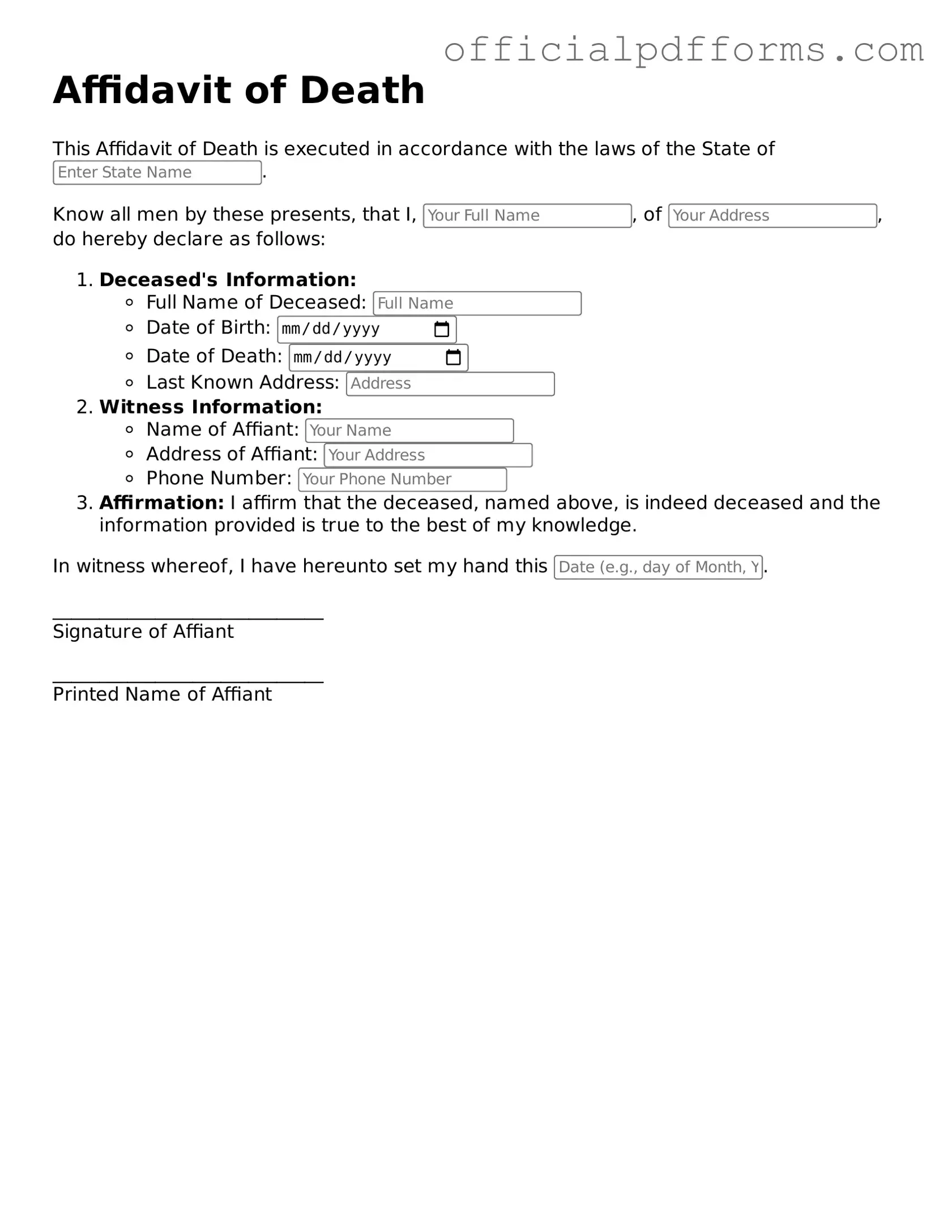What is an Affidavit of Death?
An Affidavit of Death is a legal document that provides proof of an individual’s passing. This document is often used in various legal and financial contexts, such as settling estates, transferring property titles, or closing bank accounts. It serves as an official declaration that the person has died, which may be necessary for the execution of their will or for the distribution of assets.
Who can complete an Affidavit of Death?
The Affidavit of Death can typically be completed by a close family member of the deceased, such as a spouse, child, or sibling. In some cases, a personal representative or executor of the estate may also have the authority to complete this document. It is important that the individual completing the affidavit has firsthand knowledge of the death and can provide accurate information.
When filling out an Affidavit of Death, the following information is generally required:
-
The full name of the deceased
-
The date of death
-
The place of death
-
The relationship of the affiant (the person completing the affidavit) to the deceased
-
Any relevant details regarding the deceased's estate or assets
It is essential to ensure that all information is accurate and complete, as inaccuracies could lead to complications in legal proceedings.
Is the Affidavit of Death required in all cases?
No, an Affidavit of Death is not required in all situations. Its necessity depends on the specific circumstances surrounding the deceased's estate and the requirements of financial institutions or legal entities involved. For example, if the deceased had a will or trust, the executor may need to provide this affidavit to facilitate the distribution of assets. It is advisable to consult with a legal professional to determine if this document is necessary in your case.
How is the Affidavit of Death executed?
To execute an Affidavit of Death, the following steps are generally followed:
-
Complete the affidavit form with the required information.
-
Sign the affidavit in the presence of a notary public, who will verify the identity of the affiant.
-
File the notarized affidavit with the appropriate entities, such as banks, courts, or property registries, as needed.
Proper execution is crucial to ensure that the affidavit is accepted and recognized legally.
Can the Affidavit of Death be challenged?
Yes, an Affidavit of Death can be challenged, particularly if there are disputes regarding the validity of the document or the circumstances of the death. Interested parties, such as heirs or beneficiaries, may contest the affidavit if they believe it contains false information or if they have evidence that contradicts the claims made within it. In such cases, legal advice may be necessary to navigate the complexities of the situation.
